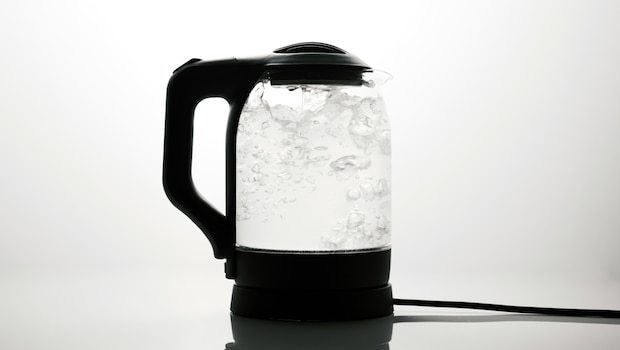An electric kettle may look like a small appliance, but anyone who relies on it every day knows how central it is to a kitchen routine. From early-morning chai to late-night green tea, it saves time, heats water quickly, and fits into a corner without fuss. For many households, it is used several times a day, which means the material you pick matters more than people realise. Stainless steel and glass remain the most common choices in India, both reasonably priced and widely available, yet very different in performance, durability, and maintenance. If you are planning an upgrade or buying your first electric kettle, understanding how these two materials compare will help you make a practical, long-lasting decision. Here is a detailed and easy breakdown of how they differ.
Also Read: 6 Genius Ways To Use Electric Kettles Every Day
Stainless Steel Vs Glass Electric Kettle: How Are They Different?

Photo: Unsplash
1. Heat Retention And Speed
Once people start comparing kettles, the first factor they usually consider is heating speed and how long the water stays warm.
- Stainless Steel Kettles:
Stainless steel heats rapidly and retains warmth for longer, which helps if you make tea or coffee several times a day. It cuts down repeat boiling and suits busy routines.
- Glass Kettles:
Glass warms a little slower and loses heat quicker, so the water cools faster. It still works well for daily use, especially for those who boil fresh water each time instead of storing it in the kettle.
2. Durability And Lifespan

After heating performance, durability becomes the next natural point of comparison.
- Stainless Steel Kettles:
Steel kettles are known for strength and are resistant to dents and cracks. They tolerate daily handling and usually last for years without major issues.
- Glass Kettles:
Glass kettles look refined but need careful handling. Sudden temperature changes or accidental falls can cause cracks. With gentle use, they last, but they are not suited to rough handling.
3. Safety And Material

Safety becomes especially important for homes with children or pets.
- Stainless Steel Kettles:
Good quality stainless steel keeps water free from chemical leaching, but the outer body becomes quite hot. This may need extra caution in family kitchens.
- Glass Kettles:
Borosilicate glass is non-reactive and safe for boiling water. The exterior usually stays cooler than steel, although the glass surface still needs careful handling.
4. Cleaning And Maintenance

How much time you want to spend cleaning a kettle often influences the final choice.
- Stainless Steel Kettles:
Steel hides stains and marks better, which helps maintain a clean look. They do not require frequent scrubbing, but limescale may stick to the inner surface, so occasional descaling is necessary.
- Glass Kettles:
Glass shows stains, rings, and water marks clearly, so it needs more frequent cleaning. The transparent body helps you spot residue early and keep hygiene in check.
5. Aesthetic Appeal And Kitchen Style

Once performance and maintenance are clear, people often decide based on how the kettle looks on the countertop.
- Stainless Steel Kettles:
Steel kettles look sleek and neutral, fitting well into almost any kitchen. They blend easily with other stainless steel appliances.
- Glass Kettles:
Glass kettles have a clean, premium appearance. Watching the water boil adds a stylish touch and suits modern or minimalistic kitchens.
How To Clean An Electric Kettle Properly

A clean kettle improves taste and keeps the appliance efficient. Both stainless steel and glass kettles respond well to basic descaling routines.
To descale your kettle, follow these steps:
• Fill it halfway with equal parts water and white vinegar.
• Boil the mixture once, then let it sit for 20–30 minutes.
• Discard, rinse well, and boil plain water once to remove any smell.
For routine cleaning:
Use a soft sponge inside, avoid harsh scrubbing pads, and pay attention to the spout area where mineral residue collects. For glass kettles, baking soda paste helps clear cloudy marks and restores shine.
Also Read: Living The Hostel Life? Make These 7 Recipes In Your Electric Kettle
Common Mistakes To Avoid While Using An Electric Kettle
Many people unintentionally reduce the lifespan of their electric kettle through small habits. Avoiding these helps the appliance last longer.
Overfilling the kettle: This causes water to spill into the base and damage the heating element.
Boiling water repeatedly: This increases mineral buildup and affects taste.
Leaving water in the kettle overnight: This encourages limescale and metallic odours.
Placing the base on a wet countertop: Moisture can affect electrical parts.
The best practice is to allow the kettle to cool between uses, dry it after washing, and descale it twice a month if you live in a hard-water area.
About Nikita NikhilMeet Nikita, a passionate soul with an insatiable love for two things in life: Bollywood and food! When she's not indulging in binge-watching sessions, Nikita can be found behind the lens capturing moments or expressing her creativity through painting.





